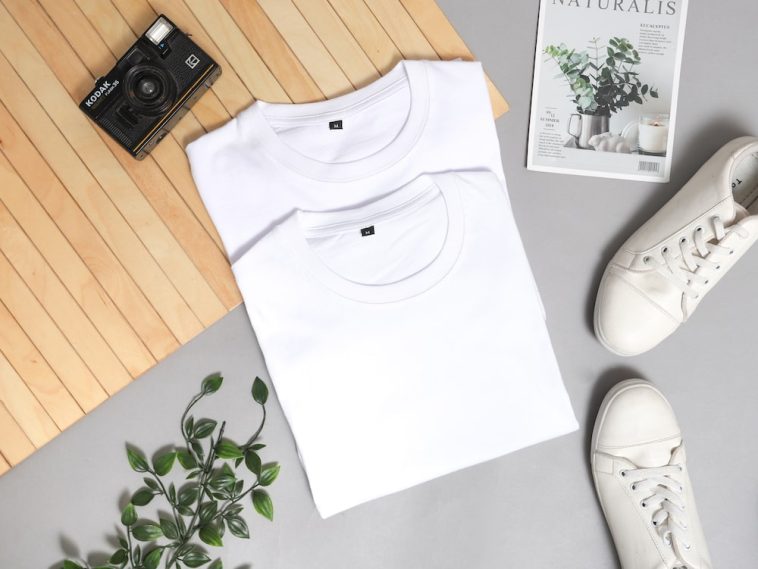Introduction.
If you’re looking for a flexible, low-risk way to launch a small business, print-on-demand (POD) shirts could be a perfect fit.
With the rise of e-commerce platforms and POD services, starting a t-shirt business from scratch has become easier than ever.
You don’t need to manage inventory, spend big on equipment, or worry about storage and shipping. In fact, with POD, you can turn a simple design idea into a real product without all the usual startup challenges.
In this article, I’ll walk you through everything you need to know to start a print-on-demand shirt business—from setting up your shop to promoting your designs effectively.
I’ll also cover the pros and cons, answer some frequently asked questions, and even leave you with a question to think about as you consider this venture.
The Basics of Print-On-Demand
Print-on-demand (POD) is a fulfilment model where a third-party provider prints and ships your products only after a customer places an order.
This business model means you don’t pay for products until after you’ve sold them, allowing for a virtually zero-inventory business setup.
POD is especially popular for clothing, like t-shirts, where designs can be quickly printed and shipped directly to customers, saving you from handling logistics.
Why Print-On-Demand Shirts?
T-shirts are some of the easiest and most profitable products in the POD world. The fashion industry, especially casual wear, has seen continuous growth, with the global custom t-shirt market size estimated to be worth $3.64 billion in 2020 and projected to reach $7.57 billion by 2028. With POD shirts, you can tap into this market without a huge initial investment.
How Do I Start a Print On Demand Shirt Business?
1. Identify Your Niche and Audience.
To stand out, it’s helpful to target a specific niche. Consider what interests you or what communities might resonate with a unique line of t-shirts.
For example, themes like eco-conscious designs, motivational quotes, animal lovers, or retro styles can help attract dedicated customers.
2. Create Original, High-Quality Designs.
Design is key when it comes to POD t-shirts. Use graphic design tools like Canva or Adobe Illustrator to create unique, high-quality designs that reflect your brand. If design isn’t your strong suit, consider hiring a freelancer on platforms like Fiverr or Upwork.
3. Choose a Reliable Print-On-Demand Partner.
Your POD provider will handle production and shipping, so choose carefully. Popular platforms include Printful, Printify, and TeeSpring. When selecting, consider factors like:
- Product variety and quality
- Pricing and profit margins
- Shipping costs and delivery times
- Integrations with e-commerce platforms like Shopify or Etsy
4. Set Up Your Online Store.
With platforms like Shopify, Etsy, or WooCommerce, setting up an online store is easier than ever. Many POD platforms also integrate with these e-commerce tools, so you can sync products automatically.
Make sure your store’s layout is easy to navigate, with clear product images, detailed descriptions, and clear calls to action.
5. Price Your Products Strategically.
Pricing affects both your brand image and profit. Calculate your base costs, which include the POD provider’s price, shipping fees, and any platform fees. Most successful POD t-shirt businesses price their products with a 20-40% profit margin.
6. Market Your T-Shirt Business.
Marketing can make or break your POD business. Some ways to promote your brand include:
- Social Media Marketing: Use Instagram, Facebook, and TikTok to showcase designs, run ads, and engage with potential customers.
- SEO: Optimize product descriptions with keywords to attract organic traffic.
- Influencer Collaborations: Partner with influencers who align with your brand’s niche.
- Email Marketing: Collect emails and send regular updates, promotions, or new product launches.
Pros and Cons of a Print-On-Demand Shirt Business
Pros
- Low Upfront Investment: Only pay for products after a customer orders, reducing risk.
- No Inventory or Shipping Management: POD providers handle production and logistics.
- Scalable: Easy to expand product range without extra costs.
- Design Flexibility: Quickly test new designs without big commitments.
Cons
- Lower Profit Margins: Since POD providers handle production, you’ll pay more per unit than if you produced in bulk.
- Limited Control Over Quality and Shipping: Quality and delivery times vary by provider.
- High Competition: POD shirts are a popular business, making it challenging to stand out.
- Reliance on Third-Party Providers: You’re dependent on the POD partner’s stock, pricing, and quality.
FAQ
1. How much does it cost to start a POD t-shirt business?
The startup costs can be as low as $0 to $50 if you’re using free design tools and a platform like Etsy. Shopify costs around $29 per month, plus additional costs for domain names and premium design tools if you choose to invest in those.
2. Can I use any image for my designs?
No. To avoid copyright issues, use images and graphics that you’ve created, purchased, or sourced from royalty-free libraries like Unsplash or Pexels.
3. Which platform is best for beginners?
For beginners, Printful and Printify are popular due to their ease of use, quality products, and integration options. Both are beginner-friendly and support direct integration with Shopify, Etsy, and other e-commerce platforms.
4. How do I handle returns or refunds?
Each POD platform has its return policy, but in general, defective items are refunded or replaced by the POD provider. For sizing issues or buyer’s remorse, you may need to establish your own refund policy on your store.
5. How long does it take for customers to receive their orders?
Delivery times vary by provider, but it typically takes 7-15 days for POD products to reach customers. Some platforms offer express shipping at an additional cost.
Conclusion
Starting a print-on-demand shirt business can be a rewarding way to enter the e-commerce world with relatively low risk.
By identifying a niche, creating standout designs, and choosing reliable partners, you’re setting up a solid foundation for success.
Keep in mind that patience, persistence, and a knack for promoting your brand will go a long way.
So, are you ready to create that first design and see where it takes you? What niche are you most excited about exploring?





GIPHY App Key not set. Please check settings